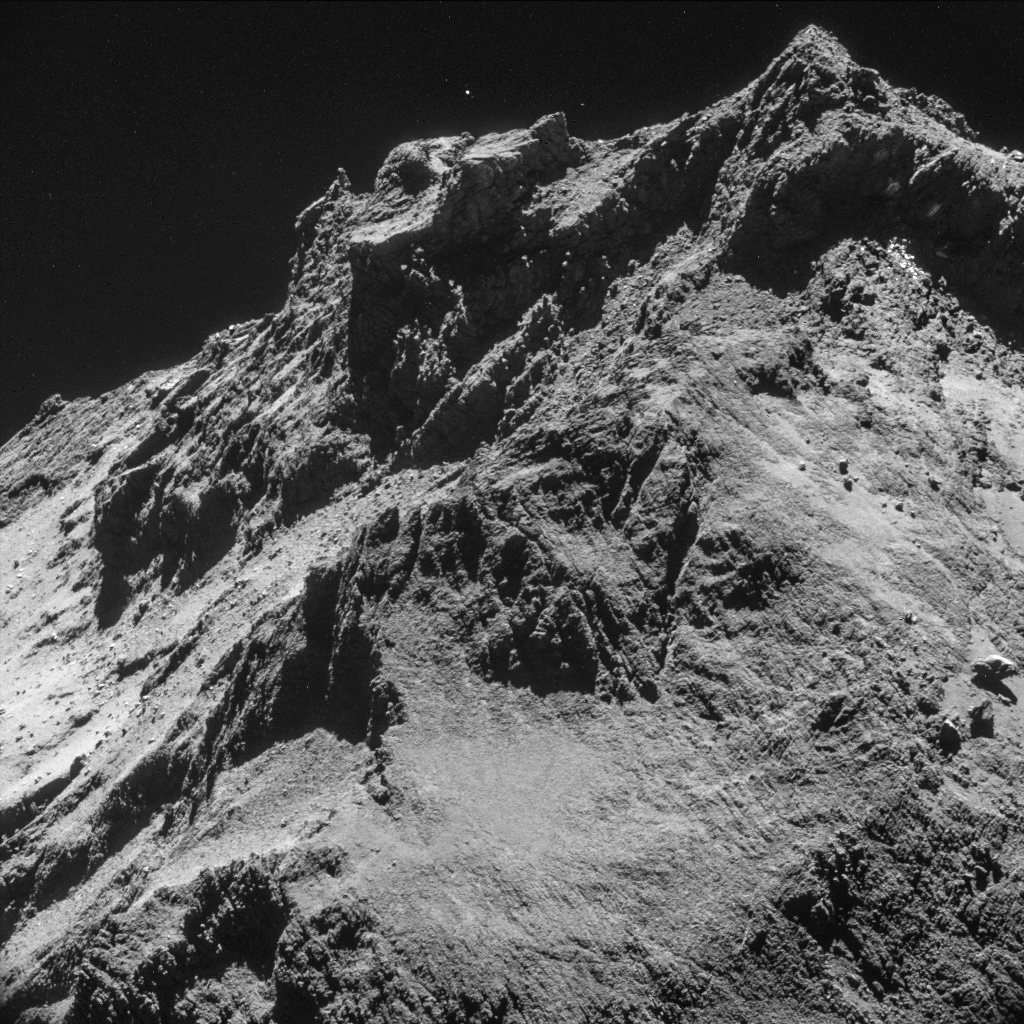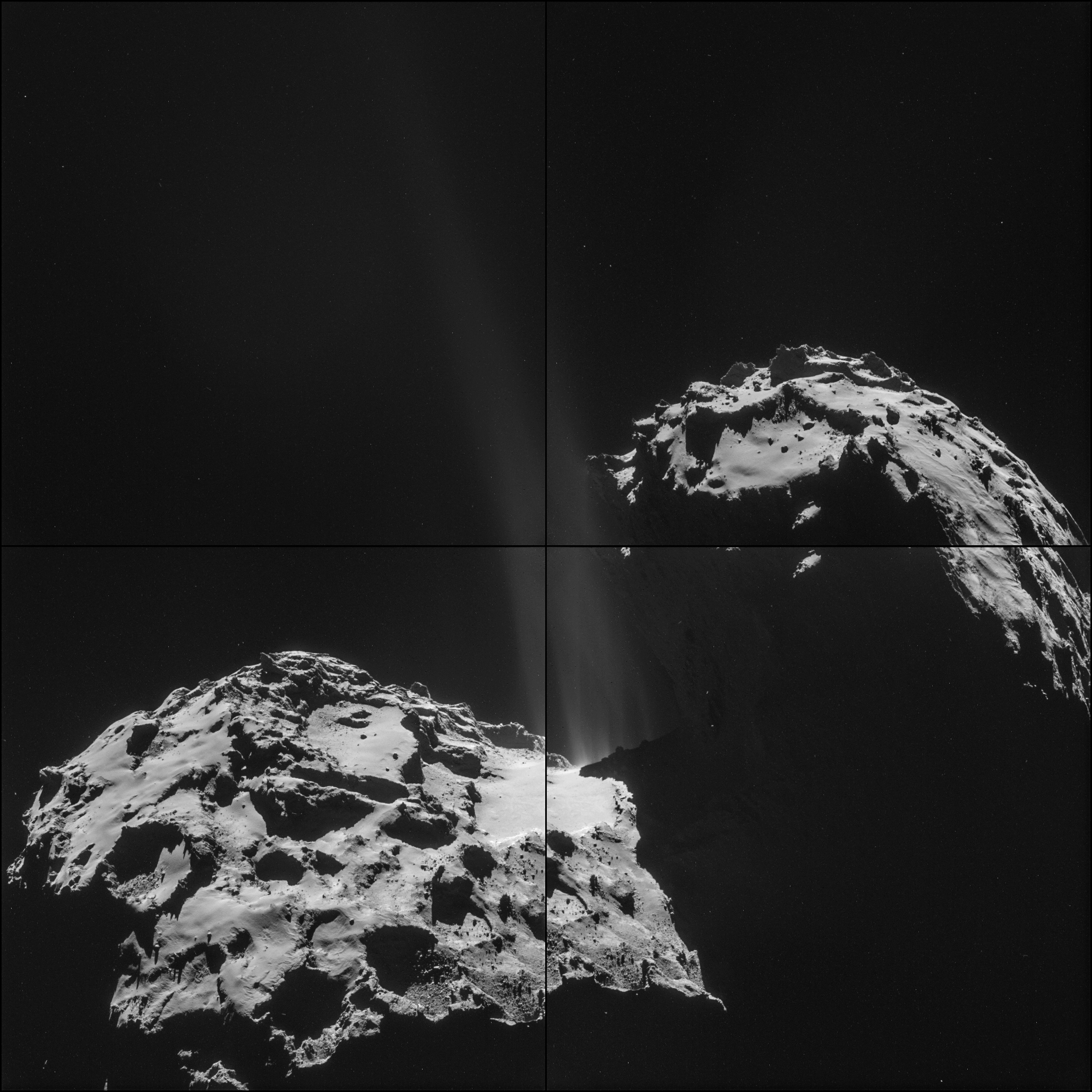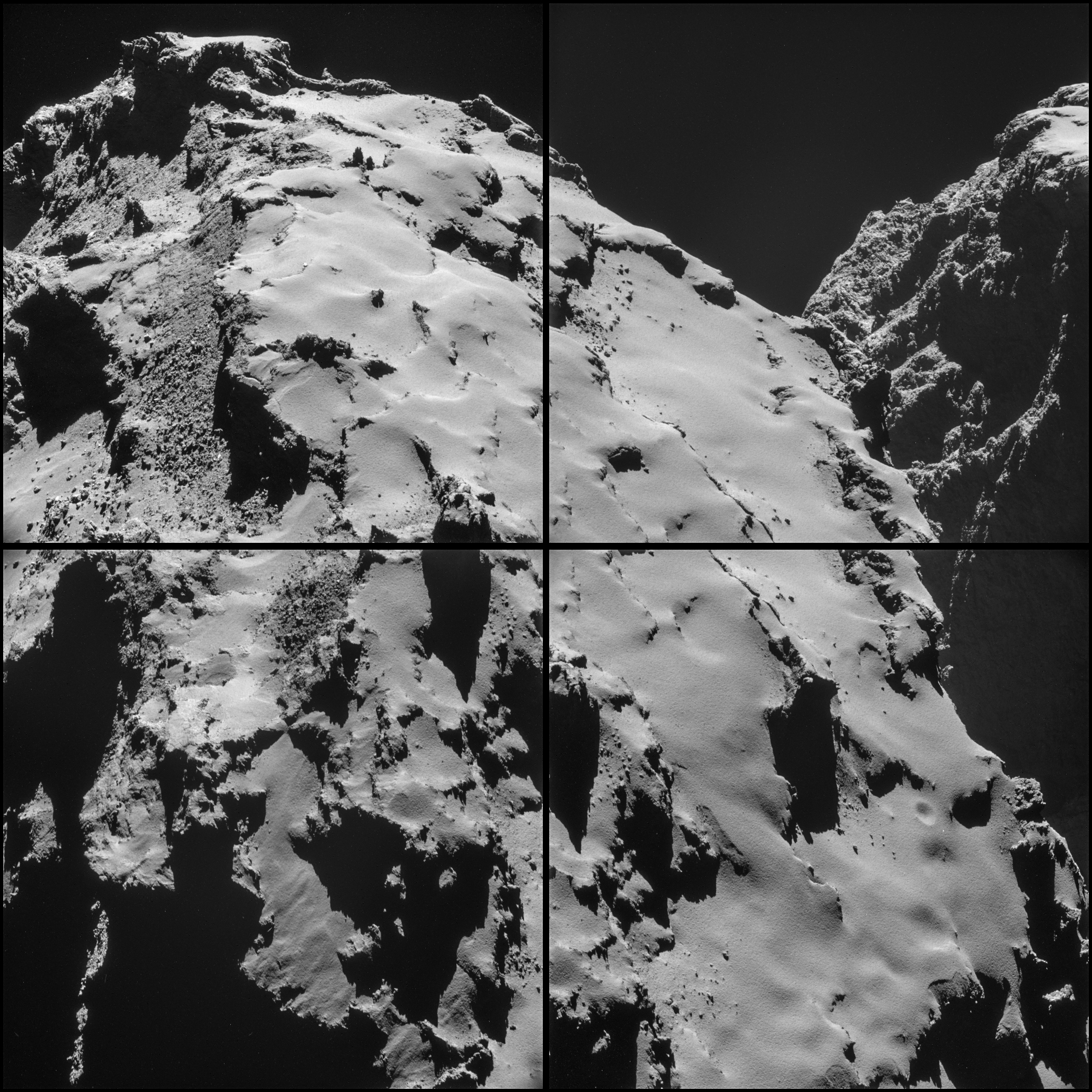There are some stunning images from this mission which I thought would be of interest.



All images are by the European Space Agency (ESA). More images of 67P/Churyumov-Gerasimenko here:
Category: photos of Comet Churyumov-Gerasimenko taken by Rosetta - Wikimedia Commons
For reference:



All images are by the European Space Agency (ESA). More images of 67P/Churyumov-Gerasimenko here:
Category: photos of Comet Churyumov-Gerasimenko taken by Rosetta - Wikimedia Commons
For reference:
More: Rosetta (spacecraft) - Wikipedia, the free encyclopediaRosetta is a robotic space probe built and launched by the European Space Agency. Along with Philae, its lander module, Rosetta is performing a detailed study of comet 67P/Churyumov–Gerasimenko (67P).[6][7] It also performed a flyby of the planet Mars and asteroids 21 Lutetia and 2867 Šteins.[8][9][10] On 12 November 2014 the mission performed the first soft landing on a comet and returned data from the surface.[11]

